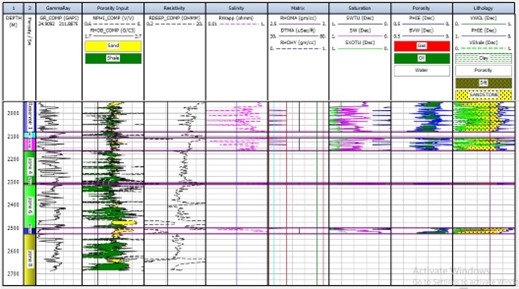Petrophysical Analysis of Reservoir Quality using Key Production Parameters: A Case Study of the G-Oil Field within the Niger Delta Basin
Keywords:
Petrophysical, Porosity, Water Saturation, Permeability, Niger-Delta, Hydrocarbon, Carbon SequestrationAbstract
Production parameters of reservoirs such as Porosity ( , Permeability (K) and Water Saturation (Sw) are among the fundamental properties that determine a reservoir’s quality, defining its ability to store hydrocarbon and CO2.The Petrophysical analysis (production parameters) of the G-Oil Field in the Niger Delta basin was aimed at assessing the quality of the reservoirs in supporting hydrocarbon exploitation and carbon sequestration. Interactive Petrophysics (IP) Software was used to analyse 8 well log data in LAS format. 18 geologic reservoirs were delineated using the combination of Basic Logonal, Porosity/Water saturation algorithm and the Cut-off & summation algorithm of the IP software. Production Petrophysical parameters such as Effective Porosity ( eff), Permeability (K) and Water Saturation (Sw) were determined using the Tixier, Wyllie-Rose and Indonesian equations respectively. Results show that effis in the range of 14.2% - 27.5% adjudged to be good porosity to very good porosity while Sw values in all 18 reservoirs ranged between 13.1% and 45.7%. K ranged between 181.01mD and 7942.091mD, placing it within the ‘Very good - Excellent’ permeability classification. Mean value of eff, Sw and k for the G – Oil field are 22.8%, 31.0% and 1780.941mD respectively. These values as reviewed fell in the quality classification of Very good porosity, Very good Water Saturation and Excellent Permeability. These imply that the G – Oil field has good quality reservoirs which are highly prolific in terms of hydrocarbon production and suitable for Carbon Sequestration.





